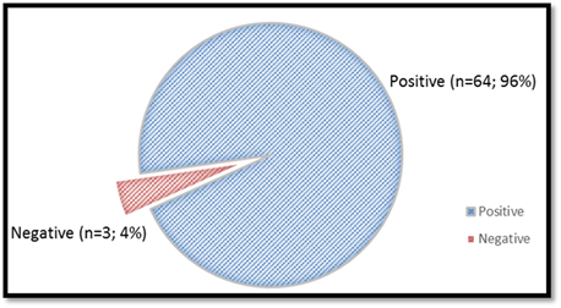Abstract
Soil-transmitted helminth (STH) infections occurs via fecal-oral route. WHO has reported there are up to 90% of children from poor communities with inadequate hygiene and sanitation prone to at least one STH infection. In Malaysia, the indigenous community (Orang Asli) is the predominant communities prone to STH infections. Hence, this study was aimed to determine the prevalence of STHs infections among Orang Asli in Kampong Donglai Baru, Semenyih, Selangor. Questionnaires surveys were conducted to gather information on the risk factor associated with the Orang Asli community following with stool samples were collected from the villagers. Basic parasitology method, floatation technique was carried out to determine the type and burden of STHs. Total sample obtained from salt-sugar floatation method were sixty seven (n=67), with 64 (95.5%) were positive for STH infection. The prevalence of Trichuris trichiura was 85.9% (n=55) while Ascaris lumbricoides was 93.8% (n=60). Results shown majority of the villagers have double infection (79.7%, n=51). Several risk factors were found significantly associated (p<0.05) with T. trichiura infection such as age factors, education level and frequency of hand washing. However, those risk factors were no significant associated with A. lumbricoides infection. The study showed a higher prevalence rate of STH infection predominantly by Trichuris trichiura and Ascaris lumbricoides within a small group of the Orang Asli community, hence further prevention method like administration of anthihelminthic drug is recommended.
Full text article
Authors

This work is licensed under a Creative Commons Attribution-NonCommercial-NoDerivatives 4.0 International License.

